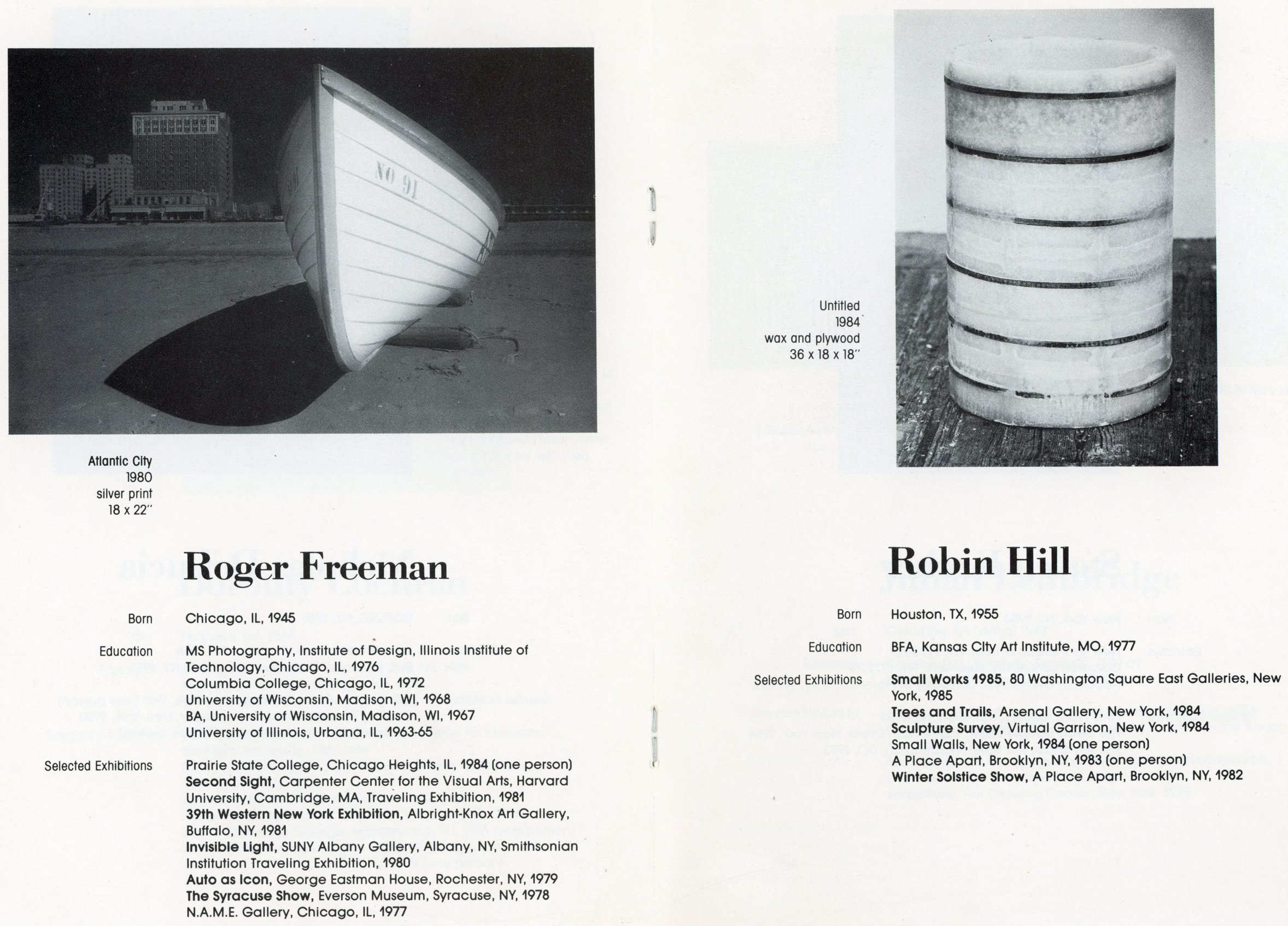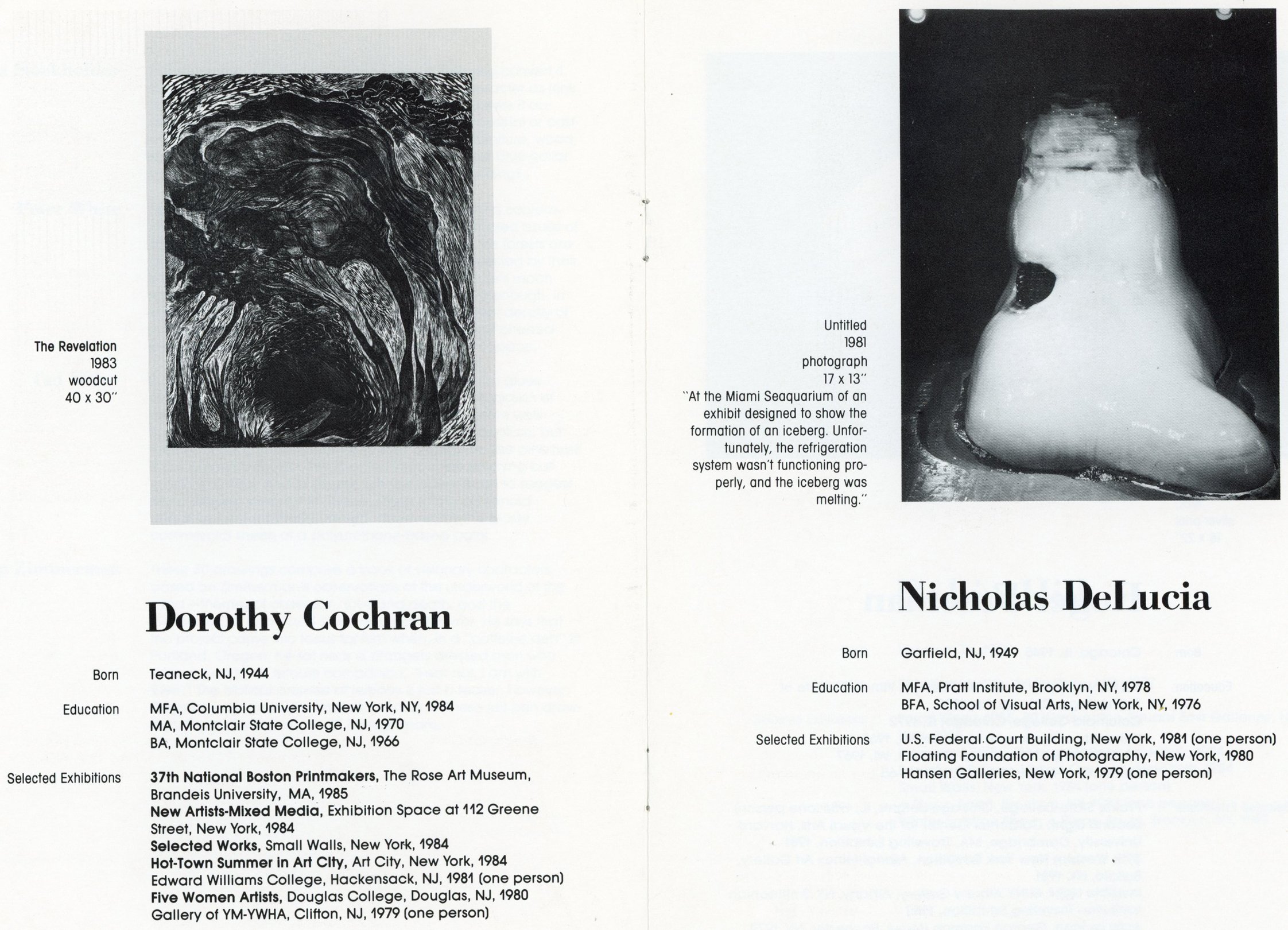Selections From the Artists File
September 21 - October 19, 1985
Artists Space
223 West Broadway
New York, NY
Selections From the Artists File catalog
Artists Space was founded in 1972 by arts administrator Trudie Grace and critic Irving Sandler as a pilot project for the New York State Council on the Arts (NYSCA), with the goal of assisting and presenting emerging and unaffiliated artists. Artists Space quickly became a leading organization in the downtown alternative arts scene in New York, which also included burgeoning institutions such as the 112 Workshop (later renamed White Columns), and the Institute for Art and Urban Resources (which became P.S. 1 Contemporary Art Center).
During its first years, all of Artists Space's exhibitions were organized by artists presenting the work of other artists. Other early efforts to engage and help artists included the Emergency Materials Fund, which assisted artists with the presentation of their work at an established nonprofit venue, and the Independent Exhibitions Program, which supported the needs of artists who were involved in the production and presentation of work outside the context of an existing institutional structure. Through the decades, Artists Space has adapted to the shifting needs and concerns of artists and audiences in and outside of New York.
Artists Space has been the site of provocative discussion and experimentation within contemporary artistic debate, from the postmodern image (Douglas Crimp’s Pictures, 1977) to identity politics (Adrian Piper’s It’s Just Art, 1981), to institutional critique (Michael Asher’s Untitled, 1988) to the AIDS Crisis (Nan Goldin’s Witnesses: Against our Vanishing, 1989), and Artists Space has introduced countless artists to a wider public, amongst them Joan Jonas, Cindy Sherman, Jeff Koons, Sherrie Levine, Louise Lawler, Laurie Anderson, Barbara Bloom, John Miller, John Baldessari, Jack Smith, Andrea Fraser, Haim Steinbach, Tim Rollins, Lyle Ashton Harris, Ashley Bickerton, Peter Halley, Lari Pittman, Group Material, Stuart Sherman, Barbara Kruger, Laurie Simmons, Anthony McCall, Fred Wilson, Felix Gonzalez-Torres, Mike Kelley, Judith Barry, Michael Smith, Robert Longo, Jenny Holzer, Pope.L, Hito Steyerl, Danh Vo, and Cameron Rowland.
excerpt from catalog essay by Kay Larson:
With steel industrial strapping, or wax and cardboard, Hill "weaves" sculptures whose connecting parts depend for their strength on their ability to bind together. Citing Jackie Winsor as an important influence. Hill professes admiration for work whose shape and substance conform. The tall towers of near-black (or blackish-blue) strapping become a kind of woven three dimensional drawing. The shorter pillars and tubes are made by stacking circles of cardboard as a core or spine for molten wax; when the wax cools, the materials undergo a phase change into a third, more stable and homogeneous state. The gentleness of this sculptural metaphor is enhanced by the wax's pitted, translucent sensuality, which lends these works their persona or sense of presence.














